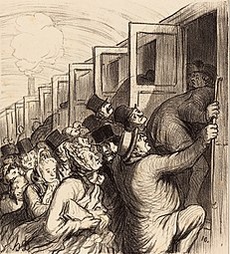The Realism Art Movement
- portiaibe
- Nov 13, 2023
- 2 min read
Introduction:
In the vast realm of art history, the Realism Art movement stands as a powerful testament to the pursuit of authenticity and the artistic representation of everyday life. Emerging in the 19th century, this movement sought to capture the world as it truly appeared, defying the romanticized and idealized depictions of previous eras. In this blog post, we embark on a captivating journey into the Realism Art movement, exploring its origin, key artists, and enduring influence.
The Origin of Realism Art:
The Realism Art movement emerged as a response to the prevailing romanticism and neoclassicism of the time. Artists sought to break free from the confines of idealization and delve into the gritty realities of society. The movement gained momentum in the mid-19th century, particularly in France, as artists rebelled against the artificiality of academic art and the extravagant subject matter preferred by the upper classes.
Key Artists of the Realism Art Movement:
1. Gustave Courbet:
Considered the pioneer of Realism, Gustave Courbet challenged the status quo with his unflinching portrayals of ordinary life. His masterpiece, "A Burial at Ornans," shocked the art world by presenting a funeral scene with real people instead of idealized figures. Courbet's bold approach paved the way for future Realist artists.
2. Jean-Baptiste-Camille Corot:
While Corot is primarily associated with the Barbizon School, he also contributed significantly to the Realism Art movement. His landscapes captured the beauty of nature with remarkable authenticity, emphasizing the play of light and shadow. Corot's work bridged the gap between Romanticism and Realism, inspiring countless artists to explore the natural world.
3. Édouard Manet:
Often regarded as the bridge between Realism and Impressionism, Édouard Manet pushed the boundaries of artistic representation with his innovative techniques. His famous painting, "Olympia," caused a sensation by depicting a reclining nude woman staring directly at the viewer. Manet's subject matter and loose brushwork challenged societal norms and paved the way for artistic revolutions to come.
4. Honore Daumier:
A master of satire and social commentary, Honore Daumier used his art as a powerful tool for political criticism. His caricatures and lithographs exposed the flaws and inequalities of French society, making him a prominent figure in the Realism Art movement. Daumier's work highlighted the power of art to provoke thought and incite change.
Enduring Influence:
The Realism Art movement left an indelible mark on the art world, inspiring generations of artists to embrace authenticity and shed light on the realities of their time. Its impact can be seen in subsequent movements such as Naturalism, Social Realism, and even contemporary art that explores the human condition in a candid and unfiltered manner.
Conclusion:
The Realism Art movement revolutionized the art world, challenging the prevailing norms of idealization and introducing a new era of authenticity. Through lifelike depictions of everyday subjects and social commentary, Realist artists like Gustave Courbet, Jean-Baptiste-Camille Corot, Edouard Manet, and Honore Daumier pushed boundaries of artistic representation and paved the way for future artistic movements.










Comments